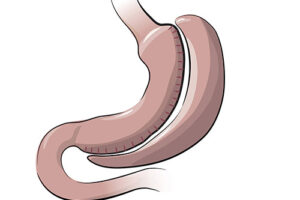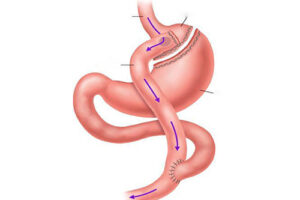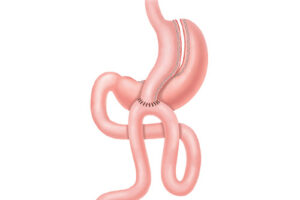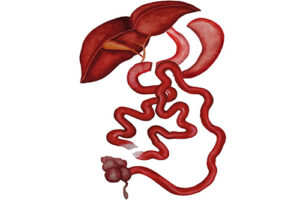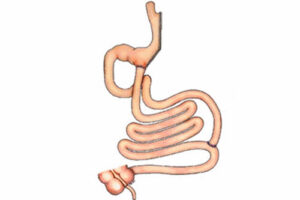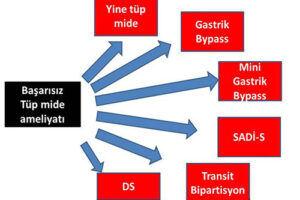Biliopancreatic Diversion (BPD) was first established in 1979 by Italian surgeon Dr. It was implemented by Scopinaro. Dr. The number of patients Scopinaro underwent BPD surgery is more than 2500.
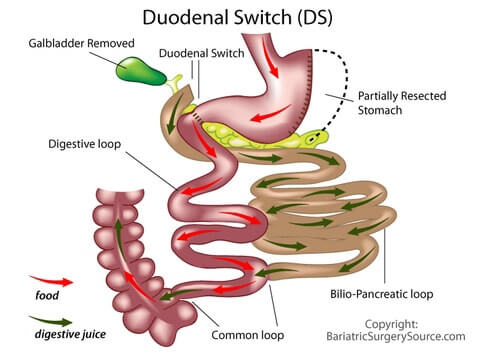
In Biliopancreatic Diversion (BPD) surgery, the stomach nerves are preserved and the pyrolic valve is preserved. The intestines are calculated and divided into sections and the relationship of the intestines is rearranged.
In Biliopancreatic Diversion (BPD) surgery, very strong weight loss is achieved due to absorption restriction effect. This surgery is also very effective in solving additional diseases and problems related to obesity such as diabetes, high cholesterol or hypertension.
The intervention in the small intestines is also different, such as extended gastric surgery. In Biliopancreatic Diversion (BPD) surgery, the small intestines carrying bile and pancreatic fluids are transported to the last half meter of the small intestines. In other words, the anastomosis is made there, and in BPD / DS surgery, it is moved to the last 100 cm. Thus, according to Biliopancreatic Diversion (BPD) surgery, the following is provided in BPD / DS surgery:
✓ Less absorption restriction is provided.
✓ A smaller stomach
In Biliopancreatic Diversion-Duodenal Switch (BPD / DS) surgery, since the intestine is involved in absorption twice more than standard BPD surgery, that is, absorption is better, there is less malabsorption in Duodenal Switch surgery and thus vitamin and mineral deficiency is less common.
The most important difference of Duodenal Switch surgery is that the pyloric muscle is preserved. Dumping Syndrome is rarely seen due to the protection of the pyloric muscle. Less incidence of Dumping Syndrome increases postoperative life comfort. However, the majority of physicians dealing with metabolic surgery do not perceive Dumping Syndrome as a problem. Because, thanks to Dumping Syndrome, our patients avoid excessive calorie and fatty meals. In this way, weight loss will be better and they can protect it much better.
In standard BPD surgery, the small intestine is directly connected to the stomach. Therefore, ulcers in the stomach and anastomosis line are more common. On the other hand, the pylorus is preserved in Biliopancreatic Diversion-Duodenal Switch (BPD-DS) surgery. Likewise, a small intestine (duodenum) of about 2-3 cm at the exit of the stomach is also protected. It is also performed at the stomach outlet. The small intestine is pulled from below for the anastomosis and this is connected to the protected duodenum. Since the duodenum is resistant to the burning effect of stomach acid and bile, ulceration is usually not seen in this area.
This surgery slows the absorption of fat and therefore its effects on metabolism are much more pronounced than other surgeries. Reducing fat absorption makes it easier to lose weight in the long term. In summary, what does Duodenal Switch Surgery provide?
✓ Duodenal Switch surgery is an effective and permanent method that provides long-term weight loss. The rate of weight loss is more than 90%. Compared to other surgical methods such as Gastric Sleeve, Gastric Bypass, Duodenal Switch surgery provides better weight loss.
✓ Patients can eat much more than Roux-N-Y Gastric Bypass, Sleeveyada Stomach Band.
✓ It is very effective in controlling diabetes and hypertension and reducing high cholesterol and high triglyceride levels to normal levels.
✓ The control rate of diabetes reaches up to 98%
✓ Obesity-related lung problems The solution rate for breathing problems, shortness of breath and shortness of breath: 98%
✓ High cholesterol and other blood fat ratio: 92%
✓ High blood pressure solution rate: 91%
✓ Since the pylorus is protected, the person does not have indigestion and DUMPING SYNDROME after surgery.
✓ It is the most suitable method for patients who cannot improve their lifestyle and eat excessive calorie and fatty foods.
✓ In this surgery, the feeling of hunger decreases as the part of the stomach producing GHRELIN (hunger hormone) is removed.
✓ "Quality of life" is high since there is no need to diet like fat restriction.
✓ Bad-smelling gas problems (Not frequent)
✓ Increased risk of anemia, protein deficiency, vitamin deficiency, osteoporosis (bone resorption). (10% - 15%)
✓ Vitamin deficiency 10%
✓ Risk of developing kidney stones 1%
✓ Risk of death rates during surgery: 0.1%

✓ Removing Bad Smelling Gas
Lifelong vitamin and mineral supplements may be required:
✓ In particular, iron and vitamin B12 deficiency may cause anemia, ie anemia.
✓ It can be Vitamin D and Calcium. Calcium deficiency can cause osteoporosis.
✓ The risk of developing gallstones and bile sludge is much higher than normal.
✓ Rarely Dumpings syndrome
✓ Fatigue and excessive fatigue may occur due to decreased energy due to fat and carbohydrates
Prof. Dr. Haluk Recai ÜNALP was born in 1963 in Merzifon. In 1987 he graduated from Ankara GATA Medical Faculty.
Until 1987-1990, Keşan served as the Chief Physician and Health Branch Manager of the 4th Infantry Division, and in 2015 he received the title of Professor.
Until 1987-1990, worked in Keşan as the Chief Physician and Health Branch Manager, and in 2015 he received the title of Professor.
İstanbul İrtibat: +90 (544) 422 32 04
İzmir İrtibat: +90 (544) 422 32 03
Tel: +90 (232) 422 32 02
Eposta: info@halukunalp.com
Lokasyon: Haritaya Gözat

